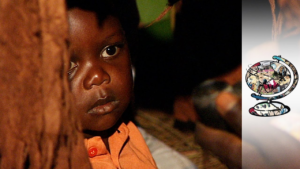While we can’t fix everything, there’s a fundamental truth that most large problems begin as small problems that, left unattended, grow or propagate.
The wisdom of solving small problems
The wisdom of solving small problems is by no means new, but perpetually forgotten. The parable of the nail conveys the impact of seemingly small problems. While its origins are unknown, versions of the following go back as far as the 13th century:
For want of a nail the shoe was lost.
For want of a shoe the horse was lost.
For want of a horse the rider was lost.
For want of a rider the message was lost.
For want of a message the battle was lost.
For want of a battle the kingdom was lost.
And all for the want of a horseshoe nail.
This captures the fundamental truth that most large problems began as small problems that left unattended grew or propagated. While we can’t solve every small problem that comes along, we should at least value them. They are important, not because of what they are today but because of what they could become.
The other important reality is that it is very difficult, if not impossible, to actually determine which small problems could potentially become big problems. If nothing else, the work to evaluate the potential risk of each unchecked small problem is undoubtedly less effort than to actually resolve the issue itself. Therefore, we must at least respect all of the small problems, as some of them will one day grow up to be one we will truly care about.
Examples of this principle
Albeit extreme, a great example of this is the Mariner 1 program. NASA has plenty of similar stories, so you might wonder if this is just a NASA problem, but the reason is that they make great efforts to study and publicize their own failures, and therefore become a true laboratory for the study of failures.
Mariner 1 was built to fly past and study the planet, Venus. It was launched in 1962, and quickly veered off course. Unable to recover and to prevent potential harm to people, the rocket was triggered to self-destruct, causing a total loss of $18.5 million. The failure happened because of a missing bar over an R symbol. R was for radius, and the bar that should have been over the R would indicate to take the average, or rather to smooth out the data, not reacting (or overreacting) to each data point. The one omission was carried forward from the written instructions, into the coded software, and eventually into the rocket, resulting in massive failure. This example demonstrates that small errors in work product can have an outsized impact.
In another theme, does every email in your inbox receive the same amount of attention? Is anything ever missed? I live not far from Washington Crossing, where during Christmas 1776 George Washington crossed the Delaware River with his troops to attack a group of hired German soldiers. It was an important moral victory, and the painting representing the moment is one of the more iconic images of American history. Because they were unnumbered, the American attack had to remain a surprise to gain the advantage. Unfortunately, a loyalist farmer along the route spotted Washington’s troops and sent word to the German troops. The message was related to the commanding officer, Colonel Johann Rall, who either never read it or never asked anyone to translate it. The unread note was found on the Colonel’s dead body, and Washington’s victory at the Battle of Trenton was a significant milestone in the war. Of course, for the Americans, this was a happy mistake.
Not all small problems with outsized impact result in the loss of millions or turning around a war, but the premise is that all over your organization there are seemingly small problems that are all equally mundane, until their impact propagates into something bigger. It could impact your customers, your employees, or just your budget, but those problems are all around you.
What can you do about it?
So, let’s start off with the good news. Although it seems obvious, solving problems while they are still small is faster and easier. One reason is that you don’t have to correct all the negative results from the problem growing large. The other reason is that tracing a problem back to the original cause when time has elapsed is much more difficult. If you are in a car accident and break your leg, you know why it is broken. If you are sick in your 50s because of something you were exposed to in your 20s, it is very difficult to figure out why, or to prove it.
Therefore, for starters, we want to design our work processes and our management systems to expose problems as early as possible. Maybe you won’t go after solving all of them, but at least you have the option. Make problems visible as they occur, and they will be much easier to find the cause and to resolve.
Even if problems are only 1/10th of the effort to solve while small, if you have 100 times as many, you are still behind. The other key solution is this: engage more of your organization in problem solving. There is nothing simpler for solving more problems than having more problem solvers ready to do the work. Many organizations think this means putting more people on problem solving teams, therefore engaging them. This often actually defeats the purpose. While the collective intelligence of the team might make the problem solving ultimately more effective, it also often slows down the process, and does nothing to increase the volume of problem solving. Instead, focus on consistency and depth of problem-solving skills across the organization and put them to work solving the problems they are closest to.
Problem solving is a very human thing to be doing. People feel a sense of accomplishment and contribution. Why not lean into that energy? Build mechanisms such as training and coaching, standards, and methods for escalation when barriers are struck, to help incite the power of people solving problems, every person, every day, and if possible, every problem.
By Jamie Flinchbaugh







More Stories
Will we soon become Vishgurus by selling our education and childhood?
Kenya: What I saw at Nairobi will remain unforgettable.
Trinidad trip: Whatever I saw, my heart was filled with pride.